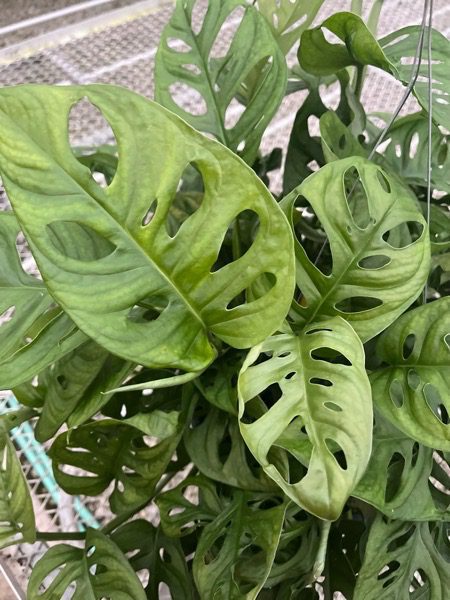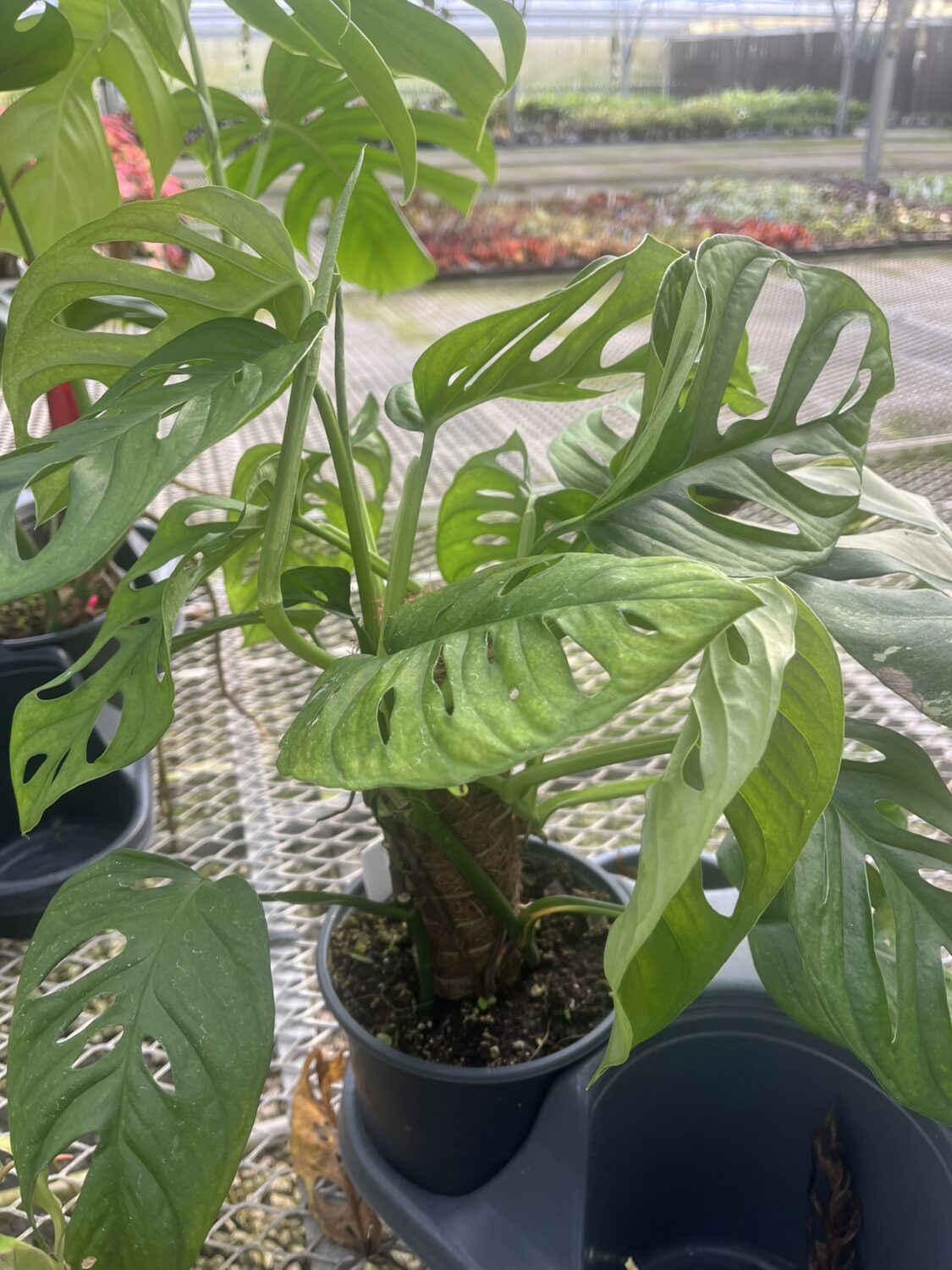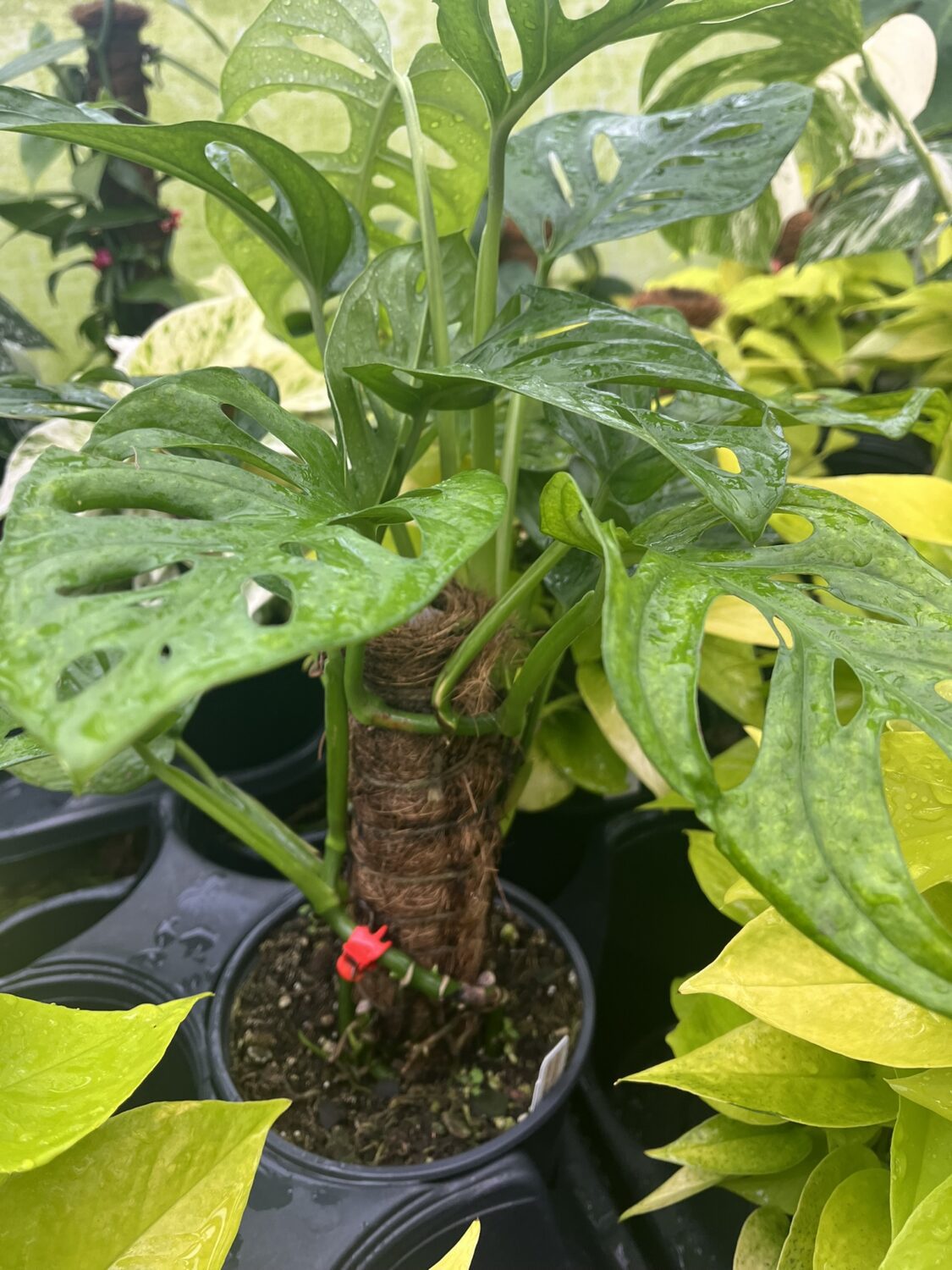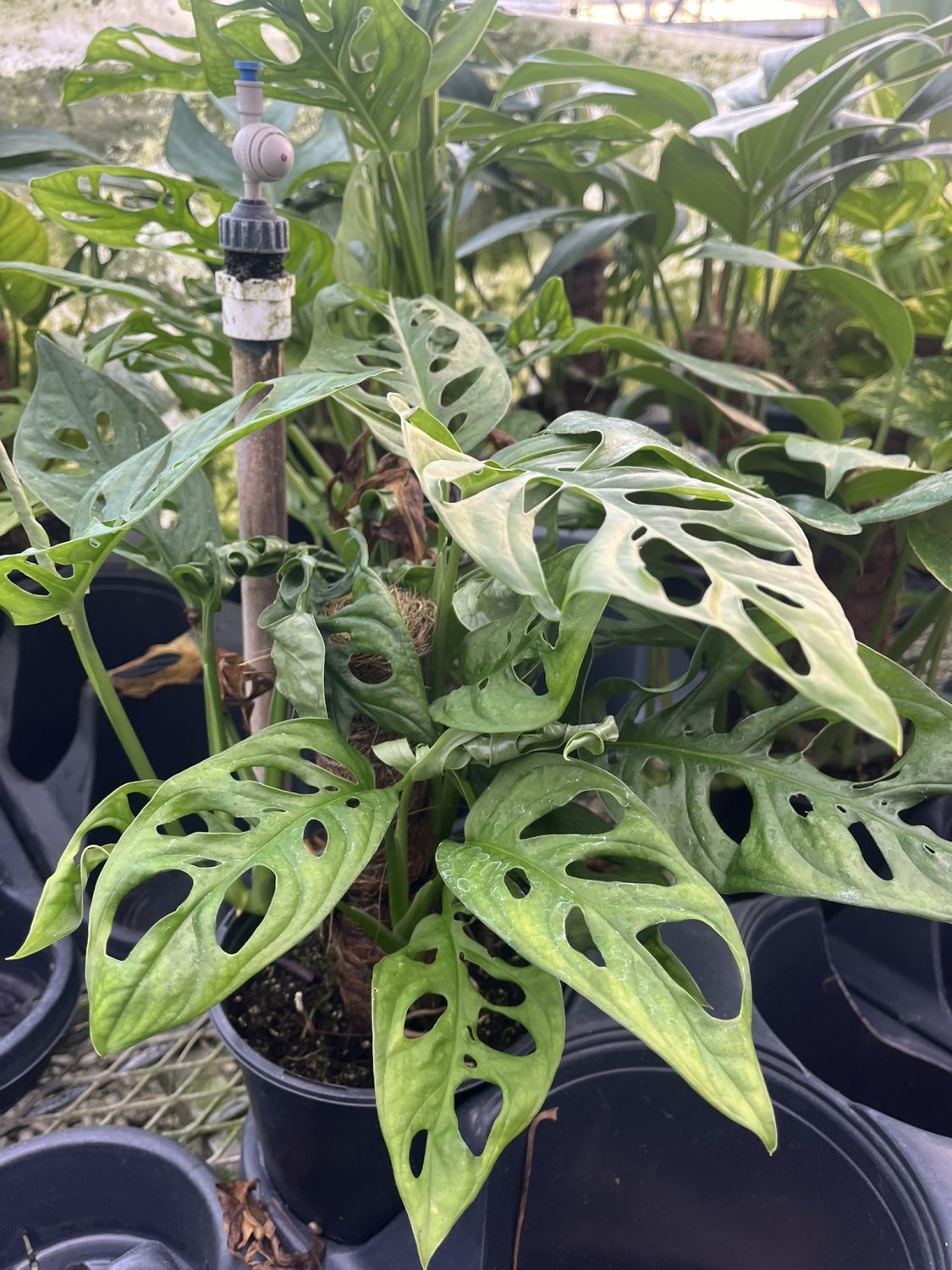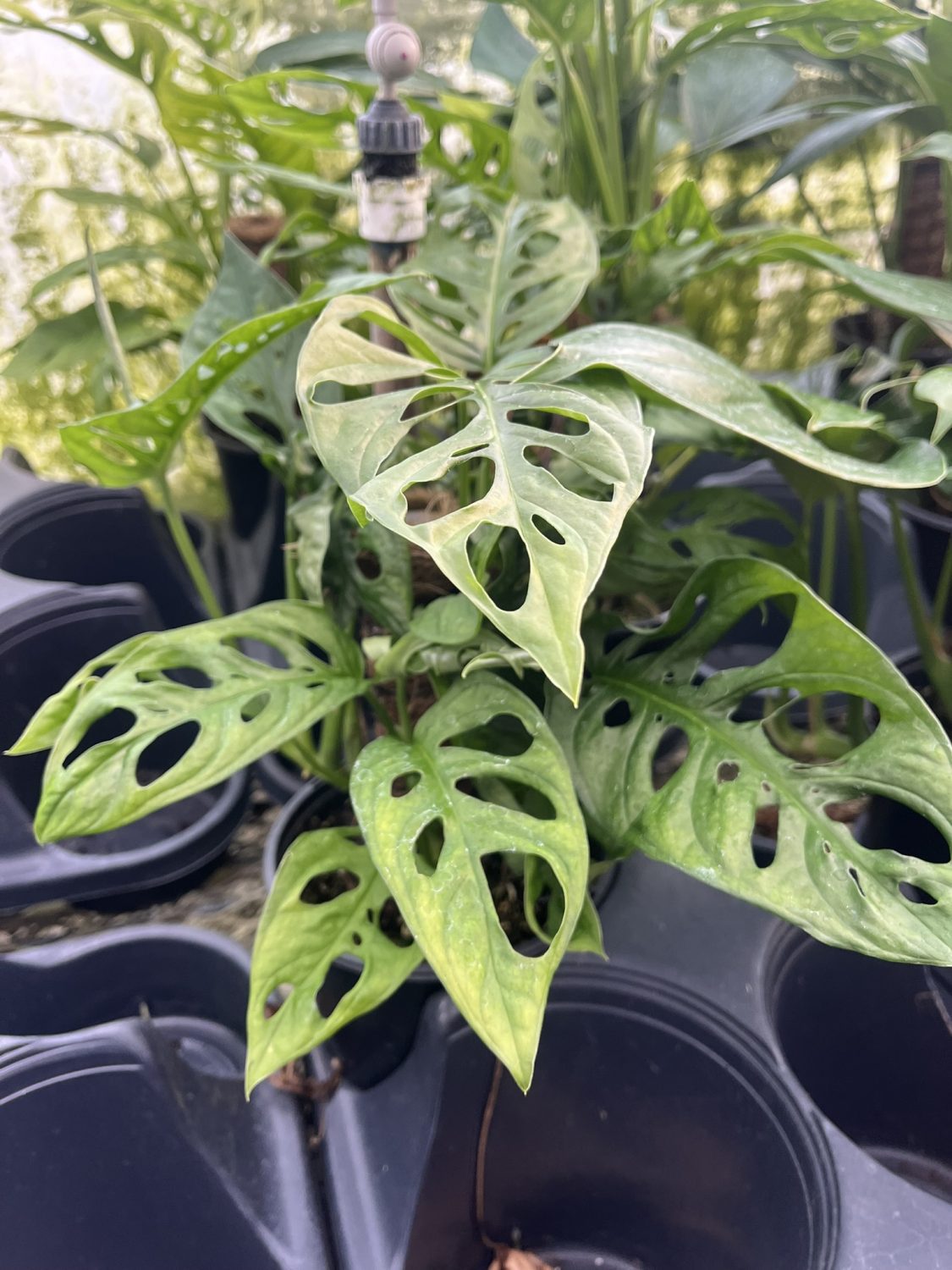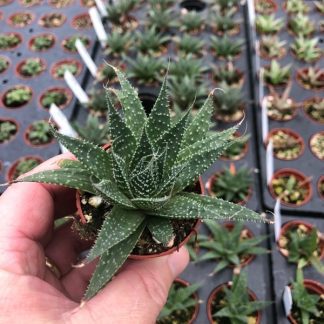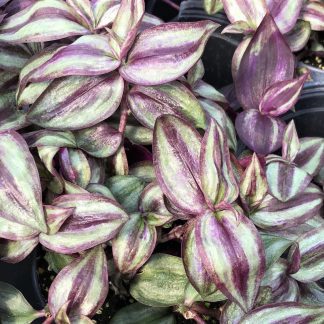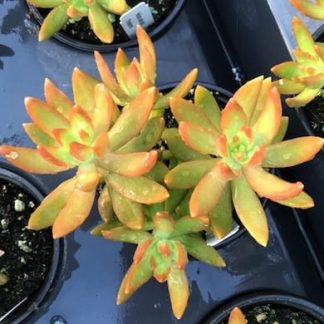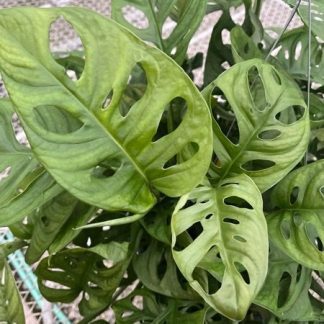Description
Monstera adansonii (Swiss Cheese Plant): Airy Leaves, Easy Vibes, Big Style
Why We Love This Plant
We all want a plant that looks special without being fussy. Monstera adansonii—often called the Swiss Cheese Plant or Swiss Cheese Vine—does exactly that. Its leaves have playful holes (fenestrations) that let light pass through like little windows. The look is airy and modern. In other words, it brings sculptural style with almost zero drama.
This Monstera is a natural climber. In its rainforest home, it anchors to trees and reaches for light. That instinct shows up in our homes, too. Give it a pole or trellis and the leaves grow bigger, with more holes and bolder shape. Let it trail and you get soft, flowing vines that frame shelves and windows. Both looks shine.
The growth habit is friendly. Stems are flexible and quick to root at nodes. That makes shaping simple and propagation a breeze. After more than a few weeks of good care, you’ll see fresh leaves unfurl like little scrolls. It’s a small moment, but it always feels like magic.
Light needs are easy. Bright, indirect light is ideal. A touch of gentle morning sun is welcome. Harsh midday sun can mark leaves, so we keep it filtered. In lower light, it will still grow, but leaves may be smaller with fewer holes. Move it closer to light and the fenestrations return. You’re in control.
Watering stays simple, too. Let the top inch or two of soil dry between drinks. Then water deeply and let the pot drain. This rhythm keeps roots strong and leaves glossy. Instead of guessing, we feel the soil with a finger. Dry on top? Time to water. Still cool and slightly damp? Give it another day.
Humidity is a plus, not a must. The plant loves 50–60% humidity, but typical home levels near 40–45% are fine with steady watering and a chunky mix. A small humidifier, a pebble tray, or grouping plants together adds a gentle boost. You’ll notice smoother edges and faster leaf growth.
Quick highlights
- Botanical name: Monstera adansonii
- Common names: Swiss Cheese Plant, Swiss Cheese Vine
- Look: Green, fenestrated leaves; vining or climbing habit
- Light: Bright, indirect; soft morning sun okay
- Water: Let top 1–2″ dry; soak, then drain
- Humidity: Average home is fine; 50–60% ideal
- Temp: 65–85°F; protect from cold drafts
- Pet safety: Considered toxic if chewed (calcium oxalate); keep out of nibble range
What you’ll receive
A healthy, well-rooted Monstera adansonii grown in a nursery pot. Size and leaf count vary by season, but every plant is selected for strong roots, fresh growth, and clean foliage—ready to trail, climb, and thrive with you.
Care Made Simple (Light, Water, Soil, Feeding, and Fixes)
Great care starts with a bright spot and a breathable soil mix. From there, everything flows.
Light
Place near an east or bright north window, or a few feet back from a sunny south or west exposure. If you see pale patches or crisp edges, the light is too strong. Step it back or add a sheer curtain. If stems stretch and leaves get small, move closer to the window.
Water
Think “soak and rest.” Water until liquid runs from the drain holes. Empty saucers. Wait until the top 1–2 inches feel dry before watering again. In warm months, that may be weekly. In cooler months, it may be every 10–14 days. Consistency beats a fixed calendar.
Soil & pot
Use a chunky aroid mix that holds moisture but drains fast. We like: 1 part high-quality potting mix + 1 part fine orchid bark + ½ part perlite + a handful of horticultural charcoal or coco chips. The goal is air around roots. Choose a pot with a drain hole. Terracotta breathes; glazed pots hold moisture longer. Both work—match the pot to your watering style.
Feeding
Feed lightly during spring and summer. A balanced houseplant fertilizer at half strength every 4–6 weeks is plenty. Skip heavy doses of nitrogen. Too much food pushes thin, fast growth. We want sturdy stems and lush leaves, not stretch.
Repotting
Repot every 12–18 months or when roots circle the bottom. Move up one pot size only. Oversized pots hold water too long. Refreshing the mix alone can perk a plant, even if you keep the same pot.
Training & support
If you want bigger, holier leaves, provide a support. A moss pole, coco pole, or simple trellis works. Gently tie stems with soft plant tape. Keep a moss pole lightly moist to invite aerial roots to cling. Climbing signals the plant to mature. In other words, support equals size.
Pruning
Snip long runners above a node to shape the plant and thicken growth. Rotate the pot every few weeks for even light and a balanced form. Save healthy cuttings for propagation.
Humidity & temperature
Aim for 65–85°F. Avoid temps below 55°F. Keep away from heater blasts or icy drafts. For a humidity bump, set the pot on a pebble tray with water below (not touching) the pot base, or run a small humidifier nearby.
Common issues & easy fixes
- Yellow leaves at the bottom: Often natural aging or overwatering. Check soil moisture and drainage; remove spent leaves.
- Brown tips/edges: Usually low humidity or underwatering; increase humidity and water on time.
- Curling leaves: Thirst, heat, or pests. Check soil, then inspect leaf undersides.
- Small leaves, few holes: Light is low or no support. Move brighter and consider a pole.
- Pests (thrips, mites, mealybugs, scale): Rinse foliage, isolate, and treat with a gentle insecticidal soap or neem. Healthy rhythm + airflow keeps problems rare.
Specs at a glance
- Habit: Vining epiphyte; climbs or trails
- Mature size indoors: Vines 6–10+ ft with support; leaf size increases with maturity
- Soil pH: Neutral to slightly acidic (6.0–6.5 ideal)
- Maintenance: Low to moderate; simple trims and occasional feeding
Style, Training, and Propagation (From One Plant to Many)
This plant fits many rooms and looks “designed” on day one. But most of all, it grows with you. You can keep it compact, train it tall, or let it cascade in easy waves. Here’s how to choose your look—and multiply it.
Design ideas that always work
- Climbing statement: Set a moss or coco pole in a mid-sized pot. Spiral one or two vines up and tie loosely. As nodes root into the pole, leaves get larger and more fenestrated. The result reads bold and architectural.
- Trailing softness: Let vines spill from a shelf, plant stand, or hanging basket. Mix with a pothos or philodendron for a layered green wall. Trim lightly to keep the front edge tidy and the back full.
- Window moment: Place near bright glass where backlight shines through the leaf holes. Morning sun makes every leaf glow. It’s a simple scene that feels calm and alive.
- Grouped greenery: Pair with split-leaf philodendrons, prayer plants, and ferns. The mixed textures look lush, and shared humidity helps everyone.
Propagating is straightforward
Instead of buying more, we can make more. Monstera adansonii roots quickly from single-node cuttings.
- Find the node. Look for a bump or aerial root along the stem beneath a leaf.
- Cut below the node. Use clean snips to take a 4–6 inch piece with at least one node and one leaf.
- Prep the cutting. Remove any leaf that would sit below the water or soil line. Optional: dip in rooting hormone.
- Root in water or moss.
- Water method: Place the node in room-temp water. Refresh weekly.
- Moss method: Tuck the node into moist sphagnum moss inside a vented bag or clear cup for high humidity.
- Light & warmth. Bright, indirect light and steady warmth help roots form in 2–4 weeks.
- Pot up. When roots are 2–3 inches long, move to a small pot with the same chunky mix you use for the mother plant. Keep the first watering gentle.
You can also layer in place. Wrap a bit of moist moss around a node on an active vine, cover with plastic, and keep it lightly damp. Once roots show, cut below the new root zone and pot it. It’s almost foolproof.
Variety notes
You may see narrow-leaf and wide-leaf forms in the trade. Both are adansonii and both are easy. Variegated forms need brighter light (still indirect) and a steadier hand with watering because white tissue lacks chlorophyll. For most of us, the classic green form brings the best balance of vigor, price, and carefree beauty.
Safety & placement
Like many aroids, this plant contains calcium oxalate crystals. Keep it out of reach of pets and kids who like to chew plants. Wipe hands after pruning if your skin is sensitive. Simple steps, peaceful home.
Everyday care checklist
- Bright, indirect light; rotate the pot often
- Water when top 1–2″ are dry; always drain
- Chunky aroid mix for airy roots
- Light feeding in spring/summer
- Train on a pole for bigger leaves, or let trail for soft flow
- Trim runners and propagate the extras
- Watch for pests during season changes
What makes ours different
We choose plants with sturdy stems, active nodes, and clean, well-fenestrated leaves for their size. Each plant is inspected, watered, and packed with care so it arrives ready to grow. Instead of spending weeks recovering, your Monstera starts strong and keeps that momentum in your space.
Leafy Windows, Everyday Wonder—Bring One Home
Let’s add a plant that turns light into art. Monstera adansonii gives us sculpted leaves, forgiving care, and endless styling options. Set it in bright, kind light. Water with a calm rhythm. Offer a pole if you want big, dramatic leaves—or let it trail for gentle movement. After more than a month, you’ll see why this vine is a favorite: steady growth, easy propagation, and that unmistakable Swiss-cheese charm. Bring one home, and watch your room feel brighter, softer, and a little more alive every single day.

